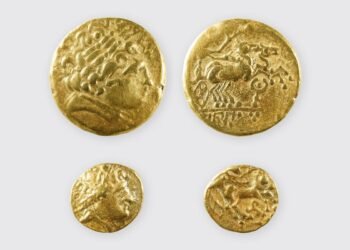The Acropolis of Athens is a magnificent ancient citadel located on a rocky hilltop overlooking the city of Athens, Greece. It is one of the most iconic and significant architectural and historical landmarks in the world. The name “Acropolis” derives from the Greek words “akro,” meaning high, and “polis,” meaning city, thus signifying its prominent location.

The history of the Acropolis dates back to the ancient Greek civilization, particularly the 5th century BCE, commonly known as the Golden Age of Athens. Pericles, the influential Athenian statesman, initiated a vast construction project on the Acropolis, aiming to demonstrate the city’s power, wealth, and cultural achievements.
The most renowned structures on the Acropolis were built during this period, including the Parthenon, the Erechtheion, the Propylaea, and the Temple of Athena Nike.
The centerpiece of the Acropolis is the Parthenon, a Doric temple dedicated to the goddess Athena, who was considered the patron deity of Athens. Designed by architects Ictinus and Callicrates, with the sculptural decoration overseen by Phidias, the Parthenon is a marvel of ancient Greek architecture.
Its harmonious proportions, intricate details, and refined craftsmanship exemplify the Classical style. The temple was constructed using white marble and adorned with sculptural friezes depicting mythological scenes, religious rituals, and historical events.
Adjacent to the Parthenon is the Erechtheion, an Ionic temple dedicated to both Athena and Poseidon. One of its distinctive features is the Porch of the Caryatids, which showcases six female figures serving as columns.
These graceful and highly detailed sculptures have become an enduring symbol of ancient Greek artistry. The Erechtheion also housed various sacred relics, including the olive tree supposedly created by Athena.

The Propylaea serves as the monumental entrance to the Acropolis, featuring a grand marble staircase leading up to the plateau. It was designed by architect Mnesicles and displays a harmonious fusion of Doric and Ionic architectural elements.
The Propylaea showcases the mastery of Greek architectural principles, emphasizing symmetry, proportion, and balance.
The Temple of Athena Nike, situated on the southwest corner of the Acropolis, is a small Ionic temple dedicated to the goddess of victory. Its delicate structure, consisting of slender columns and intricate friezes, reflects the graceful elegance of the Ionic order.

The Acropolis of Athens not only served as a religious center but also played a crucial role in the civic life of ancient Athens. It was a symbol of Athenian democracy and political power, representing the city’s cultural and intellectual achievements.
The architectural marvels of the Acropolis continue to inspire awe and admiration, attracting millions of visitors each year and standing as a testament to the enduring legacy of ancient Greece.























Disclaimer: This website is a science-focused magazine that welcomes both academic and non-academic audiences. Comments are written by users and may include personal opinions or unverified claims. They do not necessarily reflect the views of our editorial team or rely on scientific evidence.
Comment Policy: We kindly ask all commenters to engage respectfully. Comments that contain offensive, insulting, degrading, discriminatory, or racist content will be automatically removed.